~ June 20, 2025 UPDATE!!!
Five years after planting, the Catalpa grove in Carbon Hill is thriving. The young Northern Catalpas we planted in 2020 have taken root, growing tall and full under the watchful presence of their twisted elders. Their broad, heart-shaped leaves now cast generous shade across the park and, in late-June, the whole canopy bursts into a showy display of white blooms. The flowers hum with life; bees, butterflies, and other pollinators busily buzz through the blossoms, adding their own energy to the renewal of the grove.
It’s hard to tell where the old Catalpas end and the new ones begin. The canopy is beginning to feel whole again, layered with history, resilience, and fresh growth. It’s clear that this restoration project was more than just a planting, it was a revival. The trees now stand not only as symbols of the past but as living proof of what a community can do when it cares deeply for its roots.
We updated this gallery with some recent pictures of the thriving Catalpa canopy 5 years later. Scroll past these pics to read the original writeup about this fascinating project!
ORIGINAL POST 2021:
~ June 20, 2021
“We have honored and built on our past in order to take care of our future, to teach others to love what is their own, and to enjoy the small village particularly in civic minded events in our community park. The catalpas are a symbol of all that.”
– Michele Micetich, President of Carbon Hill Historical Society, Curator of CHS Museum
“History, Sustenance, Brand, Immigrants, Beloved, Homecoming, Resilience, Community”… these are just a few of the words used by members of the community to tell the story of the Catalpa Canopy of Carbon Hill. Built by immigrants as a coal mining camp, the little town of Carbon Hill has grown alongside their Catalpa grove. In the heart of this community, the Catalpas have rooted themselves into the town history – a history dating back to 1884. Our nursery grows just a few miles from Carbon Hill in the next town over. Jamie & I both grew up going to Carbon Hill as kids over the years – either for baseball or softball games or for the annual Carbon Hill Homecoming Festival. We wandered the park as kids enjoying the carnival and festivities taking place under the Catalpas – not knowing the rich history contained in their branches. Later as young parents in the early years of starting our nursery, we would take our kids to the annual summer fling in the shady town park. We took note of the big old Catalpas overhead, but it wasn’t until recently we learned about the full story of this historical canopy.
In the Fall of 2019, members of the Village of Carbon Hill contacted us at the nursery to help them with restoring the Catalpa canopy in the town park. They were seeking a grant through the Morton Arboretum Urban and Community Forestry Grant Program funded by ILDNR & USFS to replant the historic grove with 28 Northern Catalpa. We met village officials at the park to take a look at the project and help them formulate a plan for moving ahead. At first we were skeptical of planting all of the same species into the park – shouldn’t we also plant other species for diversity? But that’s when we learned about the historical significance of the grove and the desire to restore it to it’s original canopy.
Town historian Michele Micetich writes this about the origins of the park, “Our little community’s history has long been my focus and passion. Asked for the story behind our park’s catalpa trees, I verified how they came to be here and why they remain an important part of our sustainability as a village. They really are our brand.” In an impassioned letter to the community she tells the story of the founding of the park, “Carbon Hill represents one of the small coal mining camp villages in the Wilmington coal field. Our village park and our streets today hold the same footprint as they were given at inception…Our beloved and well tended Park, given to us by the Star Coal Co in perpetuity to be used as a community center, is the heart of what provides our sustenance. The Star Coal Mining Company of Streator IL sank a coal mine in Felix Township in 1884 and the coal camp grew as the coal was plentiful. The spot eventually was platted into a proper village with a park at its center. And in 1892 the village of Carbon Hill officially incorporated. By 1900 there was a population of approximately 2,000 with a business district to service these residents, as well as a hotel for railroad workers, salesmen, and space for the Star’s office. But it was the park that provided the community its true spirit. From the beginning its bandstand, the shady catalpas, the diagonal walking paths, gathered us together.”
So why Catalpas? Why were those specific trees originally planted by the Star Coal Mining Company in this little town park? With a little more historical background we learned this from Michele Micetich, “As was common at the time, catalpa trees were the craze. Known for shade, twisted trunks and limbs, and useful as railroad ties or fence posts, they were capable of withstanding big winds while providing
showy white blooms, interesting seed pods, and eerie winter shapes.” She goes on to share, “When one rides through our area, catalpa trees mark our earliest places: Coal City’s original high school, the Trotter farm, our Carbon Hill Park, various homesteads, entire streets. As for Carbon Hill, the coal company set the miners to work planting in straight rows across the entire park about the time of our incorporation. Maples were planted only along the boundary. The maples were long gone by the time I was born in 1946, but those catalpas were still standing, completely filling the west and center of the park. The slough lagoon on the east originally held a bandstand; this was converted to a ball field after WWII. Catalpas – under or up in- were the best spots from which to watch a game! Only when it became important to make space for carnival rides or bingo, food and beer stands did some catalpas come down. It is past time to replenish the bare spots, renew our identity. The Park means homecoming for descendants, residents, visitors, guests, and our catalpas will always stand as that symbol of who we are.” Click here to read her full letter to the community: Carbon Hill Catalpas
With assistance from Emily Okallau at the Morton Arboretum, the Village of Carbon Hill was awarded a grant to re-plant this historic grove. See the Village Press Release here: Carbon Hill Catalpa Press Release
In the Fall of 2019, we tagged 28 Northern Catalpa in our nursery for the Spring 2020 planting. Catalpas are fast growing and vigorous trees which transplant easily. We used 2.0″ caliper trees for the project and harvested them in early spring. Village residents used the original grid layout for the grove and flagged out the park, marking the spots where the 28 new Catalpas were to be planted. Under the existing mature Catalpas now over 100 years old, the new Catalpas were planted by local volunteers. Our SGN Trees are now taking root and growing into their own part of this fascinating town history! For more about the Catalpas we grow at Spring Grove Nursery, check out our Photo Gallery: SGN CATALPAS
One season later, our trees are happily residing in their new home amongst the twisted old Catalpas overhead. No one knows how the original Catalpas came to be so gnarly and twisted. Was it a one-time weather event? When did it happen? This mystery will remain within the towering grove and will continue to be pondered by wandering park goers. What will our new Catalpas witness throughout their life in the park? Will someone restore the canopy again 100 years from now when these new ones are old and gnarly? Only time will tell!
So many things about this project are fascinating! At SGN Trees, we love being able to be a part of community through their trees. Learning about the history of the park and the role Catalpas have played in the community over the years was so interesting. Michele Micetich said it best when she wrote, “But it was the park that provided the community its true spirit.” At the heart of every town park are it’s trees. And at the heart of Carbon Hill, the Catalpas grow.
~ Becky Thomas
Video from 2021: Northern Catalpas bloom in early June, so we stopped by the park the other day to check in on how they were doing and enjoy the flowers. We were amazed at what we found! I shot a quick video of the blooming Catalpas on a beautiful Saturday morning in the park:
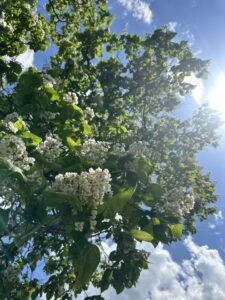
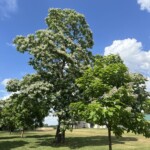
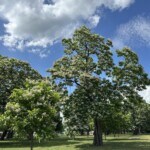
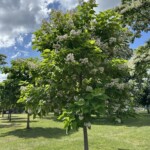
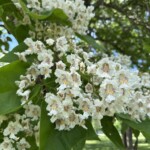
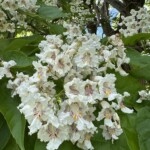
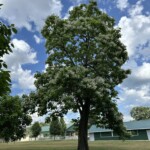
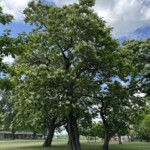
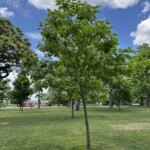
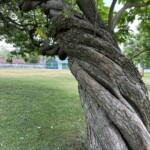
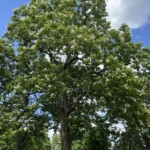
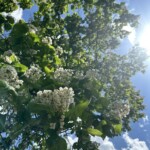
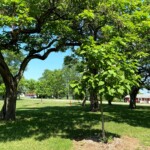

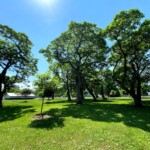
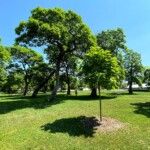
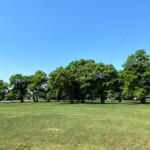
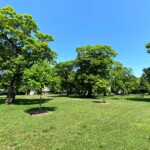
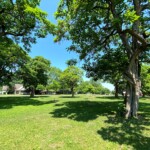
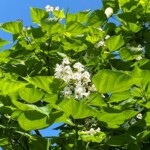
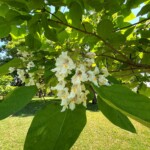
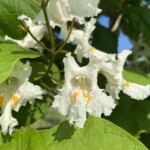
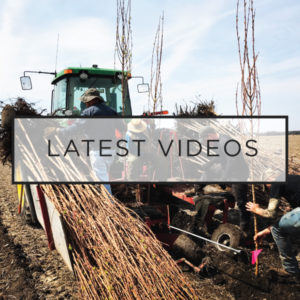



Leave a Reply